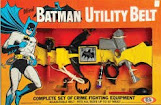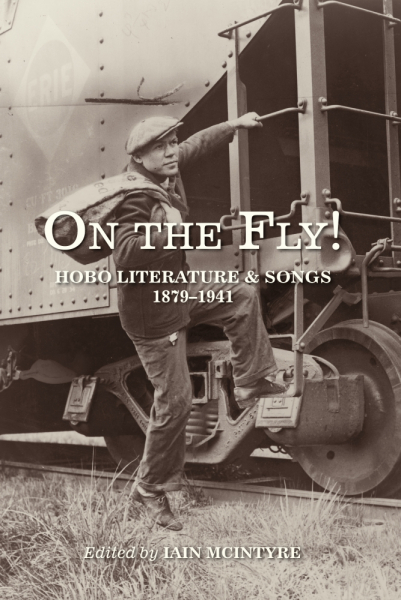It was showtime. After two years of development, industry vet William Dozier's Greenway Productions let its Batman project roar loose on a caped crusade. Dozier wasn't especially a batfan--he'd barely read the comic--but he saw opportunity in reviving a tired yet bankable franchise. Most everyone else wasn't quite so sold. On January 12, 1966, Batman's ABC debut was put up or shut up.
Dozier drew an inside straight. Batman smashed past its guarded ratings expectations, biff-ing and boff-ing aside The Virginian and Lost in Space. Batmania was born. It would die young as crazes must, but not before a glorious 1966 ride all the way to a Shea Stadium spectacular.
We all know Dozier's Batman, a groovy, goofy riff on the World's Greatest Detective. He's the ultimate square, the droll upholder of the establishment. Dozier believed that the whole Batman concept, on an objectively rational level, was silly. Here's a guy wearing bat-themed tights and cape. To fight crime. Against gang leaders self-styled as penguins and clowns. For Dozier, nothing so fantastical held together as a TV series unless done for comedy. Dozier leaned in on an epically comic vision, that of a deadpan hero contrasted against gleefully villainous villains and all of them in on the joke. Dozier himself jumps in as "Desmond Doomsday," the overly-dramatic narrator.
Critics and purists tried to kaplonk this over-the-top style. Didn't matter. In those early weeks, the Wednesday and Thursday Batman camp-fests weren't just winning their time slots. The show zapped atop every major television market for any program on any night. For its half-season, Batman beat out The Andy Griffith Show, The Beverly Hillbillies, and Bewitched.
ABC had bet on Batman with hesitation. Network execs grumbled at Dozier's production budget, but their line-up was taking a powie off CBS and NBC. ABC needed something with zam. Never mind that Adam West barely won a screen test to play Batman. Never mind that those preview audiences hated the pilot. ABC had slots to fill and a Bat Cave full of interested advertisers, so many advertisers that the writers were forced to accommodate an unheard-of fourth commercial break. Batman got rushed in as a January replacement.The accelerated TV debut jumped months ahead of the summer movie Dozier had expected to launch the franchise. In its hurry, ABC backtracked on a one-hour time slot. Thirty minutes was the max in their patchwork schedule, but ABC could make back-to-back Wednesdays and Thursdays happen. Dozier's team rewrote episodes into halves, with those now-famed woe-is-our-dynamic-duo cliffhangers tacked on to the Wednesday half. As happens, luck met opportunity. Batman's short scenes zip along antically to leave audiences wanting more, more, more.
And oh, the '66 marketing. Stores filled up with Batman costumes and gear, pedal Batmobiles, Batman playsets, Batman watches, Batman housewares, Batman toiletries, Batman snacks meant for Batman lunchboxes. Batman and Robin (Dick Ward) did a commercial for Lava Soap. West was on the cover of Life and TV Guide. He'd agreed to a summer live tour ahead of the movie release and before season two began shooting.No small part of Batmania were those cackling and mugging villains. Credit Dozier here, too. He'd been around the biz for decades. He knew everybody and how to land his guest stars. Season one's baddies included Burgess Meredith (The Penguin), Cesar Romero (The Joker), George Sanders (Mr. Freeze), and Julie Newmar (Catwoman).
That first January episode pitted Bats against Frank Gorshin's Riddler, a lavish bad guy performance that would land an Emmy nomination. In that debut episode, Batman tracked the riddle-wrapped clues to the What a Way to Go-Go nightclub where he breaks into the Batusi with Jill St. John. Robin gets nabbed, and Batman only escapes with the random aid of the Batmobile's Batostat Antifire Activator. The Batusi and the Batostat in the first episode? The audience knew what this show was about. And they loved it, again and again, same Bat time and same Bat channel.
Batman tempted viewers with more than humor. The episodes zip madcap through those shortened scenes. The sets and costumes brim with Pop Art flair. Those now-iconic WHAMM! and SOCK! bat-fight overlays splooshed onscreen amid each inevitable brawl. The camera perspectives could go Dutch Tilt rakish. In April, Dozier used that camerawork to introduce a recurring gag, the Batclimb. He'd scored Jerry Lewis to open a window and chat up Batman and Robin scaling the building after the Bookworm (Roddy McDowell). Whatever Batman lacked in serious tone, it brought style, satire, and production value. The overall package was almost too polished for camp. That polish came with a cost that vexed ABC. But in spring '66, the money and ratings flowed. Bat life was good.Here's how good: In March, Neil Armstrong and the Gemini 8 orbiter suffered America's first critical in-space system failure, and ABC couldn't bring itself to scrub Batman. Instead, an announcer broke in with occasional updates on the spacecraft. ABC was flooded with complaints -- about interrupting this week's tangle with Catwoman.
Meanwhile, on the Billboard charts, the Batman Theme was peaking at #17. Nelson Riddle's official TV show soundtrack album would be a swingin' must-have. In June, shooting wrapped on the movie tie-in. Twentieth Century Fox had a July release set. Fox grumbled over the film's massive cost ($1.8M), but the outlays would introduce new opportunities into the marketing mix. Dozier rented a spiffy new Batcycle for $50 a week. He traded a promise to premier the movie in Austin for a custom-modified Batboat. Bat life steamed along.It was time to take the show on the road. To Shea Stadium.
Batman Live! would have everything. Everything. The two-and-a-half-hour Batarama would have the Temptations, Junior Walker, and the Chiffons among the opening acts. The Young Rascals would bring their #1 sensation "Good Lovin'." Twenty-six go-go girls would dance the Batusi. This thing even had Skitch Henderson and his Tonight Show Orchestra. And of course, it had Adam West in cape and cowl squaring off against Gorshin as the Riddler. This spectacular had everything, and it was set for Saturday, June 25, 1966.
It flopped.And it really was over. A few weeks later, the movie thunked at the box office. After Labor Day, season two's premiere fizzled. Sure, it brought the same Bat formula and those new Bat vehicles. It brought Art Carney, Shelly Winters, Vincent Price, Liberace, Lesley Gore, Otto Preminger. The problem was what season two didn't bring. More penny-pinching replaced the Bat-fight word overlays with title cards. Gorshin was holding out for a raise. And the gags were last January's news. Batman didn't win its time slots.
Worse, NBC and CBS copycats had arrived to compete for any viewers still jonesing for goofball. Dozier launched his other pet resurrection project, The Green Hornet. None of them lasted, and neither could Batman. For 1967's season three, Dozier resolved things with Gorshin and tinkered with the format and introduced Yvonne Craig's Batgirl, but nothing could rekindle the magic. ABC brought down the big splatt.
Batman was pop art indeed, perfect for its moment. And what a moment, one of luck meets skill, one with undeniable appeal even today, a moment with its high water mark lapping at Shea's gates.
 |
| Your essayist's personal Bat Signal |





.jpg)

































